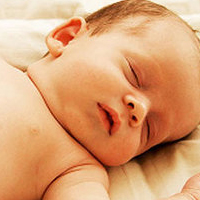
For parents dealing with newborn babies who have trouble sleeping, a machine that plays soothing sounds to lull the baby to sleep seems like a godsend. However, new research shows that when played at maximum volume some of these machines exceed the recommended noise limits for infants at hospital nurseries, possibly causing damage to a baby’s delicate ears.
Testing the Equipment
A recent study performed noise-level tests on 14 infant sleep machines that are sold in the United States and Canada. With the volume turned all the way up, the sound produced was measured at three distances from the machines: 30 centimeters (or roughly the distance from a baby in the center of a crib to the crib rail), 100 centimeters (to simulate a machine placed relatively near the crib), and 200 centimeters (6 and a half feet away, to simulate a machine placed across the room from the baby).
Hospitals place a noise limit of 50 decibels on nurseries to protect babies’ ears. All 14 of the machines tested exceeded that limit when measured from 30 and 100 centimeters away. Thirteen of the fourteen exceeded 50 decibels from 200 centimeters. Three of the devices exceeded 85 decibels from 30 centimeters away. If the machine were to play at that volume for eight hours overnight, it would exceed the noise limits set by the National Institute for Occupational Safety and Health for adult workers (to say nothing of the difference between an adult’s and a baby’s ears).
A Baby’s Hearing Development
Dr. Blake Papsin, senior author of the study and otolaryngologist-in-chief at the Hospital for Sick Children in Toronto, told the CBC that an infant’s sensitive ears require more stringent safety regulations than those used for adults. "When we modeled that in the calculations, we found that the estimates of sound pressure that we were using, the safety level might be underrepresented, because the ear canal of the baby actually might be more susceptible than the adult ear. So our safety levels are underestimates," Dr. Papsin explained.
The mere level of volume is not the only concern with the machines. Dr. Papsin also told USA Today that white noise of the kind generated by these machines may actually be harmful to an infant’s developing brain. Babies need to hear a variety of sounds to help their brains mature. "Completely removing all informational content at a loud, potentially damaging level is the worst," said Papsin.
Exercise Caution
The authors of the study called for tougher noise standards for products aimed at infants, but also urged that parents exercise caution by keeping the volume on infant noise machines turned low and positioning them as far from the baby as possible (more than 200 centimeters). Taking these measures will prevent hearing loss.
Education on the issue is also an important factor. As Dr. Gordon B Hughes, program director of clinical trials for the National Institute on Deafness and Other Communication Disorders (who was not involved with the study), told the New York Times, "Unless parents are adequately warned of the danger, or the design of the machines by manufacturers is changed to be safer, then the potential for harm exists, and parents need to know about it."
For more information on hearing loss risk factors, visit findhearingaids.com or contact us for a free consultation.
Call 877-631-9511 for FREE Consultation



